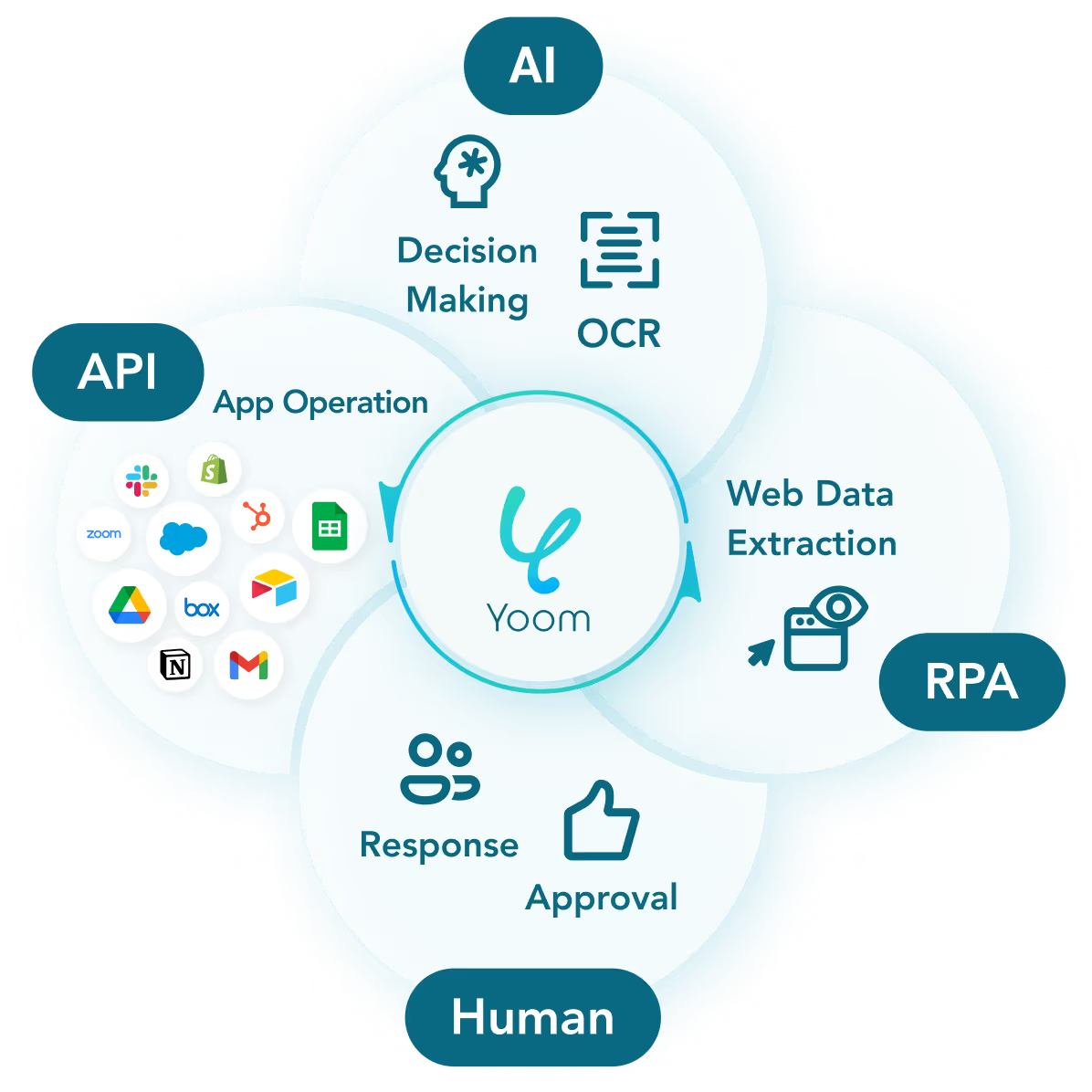
■Overview
This is a flow for registering product information on Shopify using the information from Yoom's input form.
■Recommended for
1. Shopify Store Owners
・Those who want to collect new product information using Yoom's input form and automatically register it on Shopify
・Those who want to avoid the hassle of manual product registration
・Those who want to efficiently manage new product information and quickly start selling
2. E-commerce Site Managers
・Those who want to collect product information using Yoom's input form and centrally manage Shopify's product database
・Those who want to streamline the process of registering and updating product information and reduce human errors
・Those who want to share product information across multiple sales channels and maximize sales opportunities
■Benefits of Using This Template
・You can automatically register product information entered in Yoom's input form to Shopify, reducing manual input errors and time loss.
・By consolidating product information on Shopify, it becomes easier to manage inventory and understand sales status.
■Notes
・Please integrate Shopify with Yoom.
・Shopify is an app available only on the Team Plan and Success Plan. If you are on the Free Plan or Mini Plan, the operations and data connections set in the flow bot will result in errors, so please be careful.
・Paid plans such as the Team Plan and Success Plan offer a 2-week free trial. During the free trial, you can use apps that are subject to restrictions.



 When an order is created
When an order is created
 When order information is updated (Webhook)
When order information is updated (Webhook)
 When an order is shipped (Webhook)
When an order is shipped (Webhook)
 When an order is paid (Webhook)
When an order is paid (Webhook)
 When an order is deleted (Webhook)
When an order is deleted (Webhook)
 When Product Information is Created (Webhook)
When Product Information is Created (Webhook)
 When Product Information is Updated (Webhook)
When Product Information is Updated (Webhook)
 When Product Information is Deleted (Webhook)
When Product Information is Deleted (Webhook)
 When Order Information is Created (Webhook)
When Order Information is Created (Webhook)
 When Customer Information is Created (Webhook)
When Customer Information is Created (Webhook)
 When Customer Information is Updated (Webhook)
When Customer Information is Updated (Webhook)
 When Inventory Item Information is Created (Webhook)
When Inventory Item Information is Created (Webhook)
 When Inventory Item Information is Updated (Webhook)
When Inventory Item Information is Updated (Webhook)
 When Inventory Level is Updated (Webhook)
When Inventory Level is Updated (Webhook)
 When Product Information is Created/Updated (Webhook)
When Product Information is Created/Updated (Webhook)
 Search products
Search products
 Get Inventory Quantity
Get Inventory Quantity
 Get Inventory Locations
Get Inventory Locations
 Update Inventory Quantity
Update Inventory Quantity
 Add product
Add product
 Search Orders
Search Orders
 Get Order Details
Get Order Details
 Get Product Variant
Get Product Variant
 Get Customer
Get Customer
 Create Customer
Create Customer
 Update Customer
Update Customer
 Delete Customer
Delete Customer
 Add Custom Collection
Add Custom Collection
 Add/Update Metafield Value
Add/Update Metafield Value
 Update Product
Update Product
 Update Order
Update Order
 Search Customers
Search Customers
 Create Order
Create Order
 When an order is created
When an order is created When order information is updated (Webhook)
When order information is updated (Webhook) When an order is shipped (Webhook)
When an order is shipped (Webhook) When an order is paid (Webhook)
When an order is paid (Webhook) When an order is deleted (Webhook)
When an order is deleted (Webhook) When Product Information is Created (Webhook)
When Product Information is Created (Webhook) When Product Information is Updated (Webhook)
When Product Information is Updated (Webhook) When Product Information is Deleted (Webhook)
When Product Information is Deleted (Webhook) When Order Information is Created (Webhook)
When Order Information is Created (Webhook) When Customer Information is Created (Webhook)
When Customer Information is Created (Webhook) When Customer Information is Updated (Webhook)
When Customer Information is Updated (Webhook) When Inventory Item Information is Created (Webhook)
When Inventory Item Information is Created (Webhook) When Inventory Item Information is Updated (Webhook)
When Inventory Item Information is Updated (Webhook) When Inventory Level is Updated (Webhook)
When Inventory Level is Updated (Webhook) When Product Information is Created/Updated (Webhook)
When Product Information is Created/Updated (Webhook) Search products
Search products Get Inventory Quantity
Get Inventory Quantity Get Inventory Locations
Get Inventory Locations Update Inventory Quantity
Update Inventory Quantity Add product
Add product Search Orders
Search Orders Get Order Details
Get Order Details Get Product Variant
Get Product Variant Get Customer
Get Customer Create Customer
Create Customer Update Customer
Update Customer Delete Customer
Delete Customer Add Custom Collection
Add Custom Collection Add/Update Metafield Value
Add/Update Metafield Value Update Product
Update Product Update Order
Update Order Search Customers
Search Customers Create Order
Create Order Download product image
Download product image Get product
Get product Get orders (date range)
Get orders (date range) Add product variant
Add product variant Get fulfillment orders
Get fulfillment orders Create fulfillment
Create fulfillment Update Fulfillment
Update Fulfillment Create Order (specify line items as a list)
Create Order (specify line items as a list) Update Product Tags
Update Product Tags List Customer Metafields
List Customer Metafields Create Fulfillment (products)
Create Fulfillment (products) Create blog article
Create blog article Update blog article
Update blog article Get articles for the specified blog
Get articles for the specified blog Search articles
Search articles List blogs
List blogs